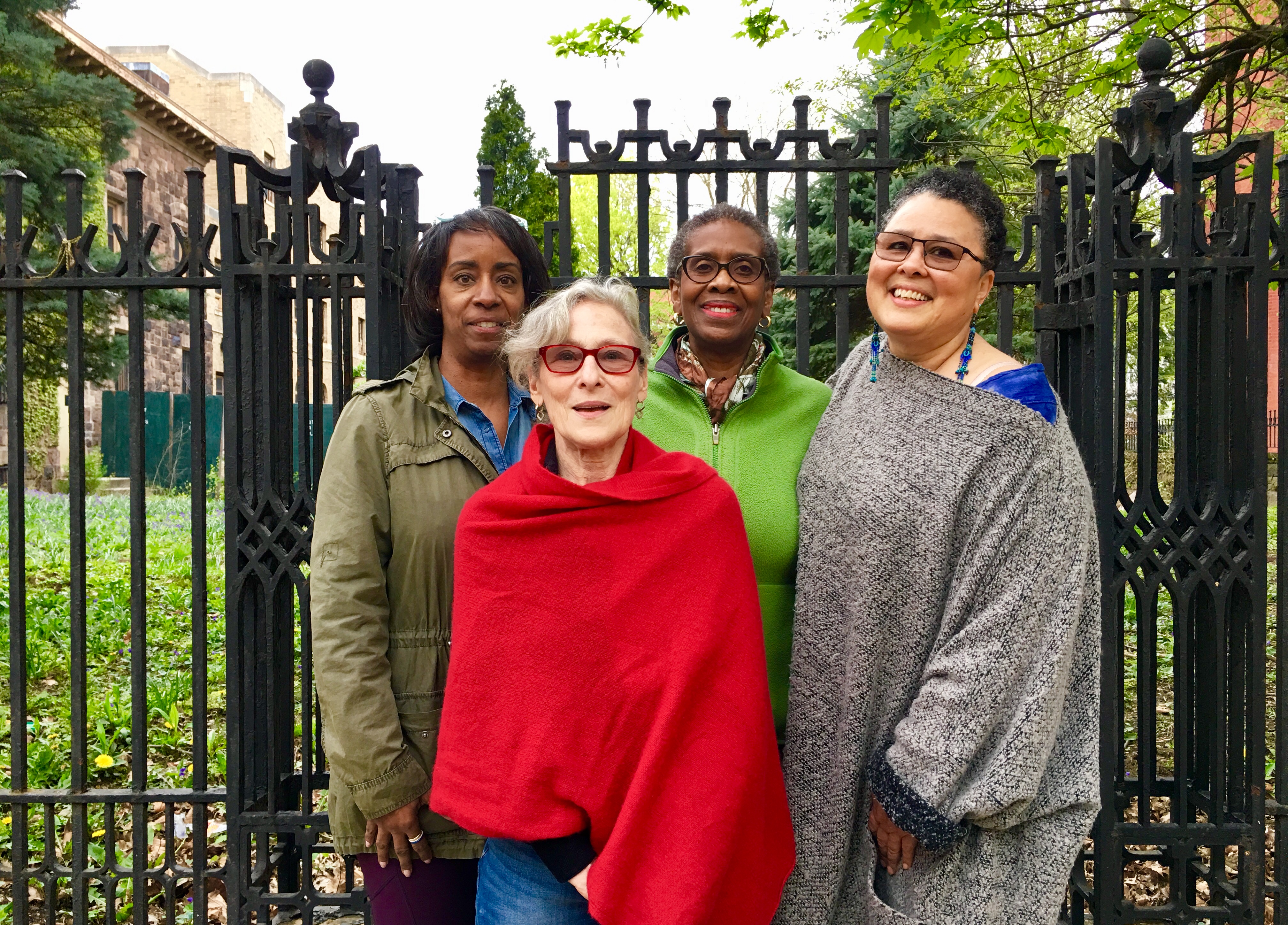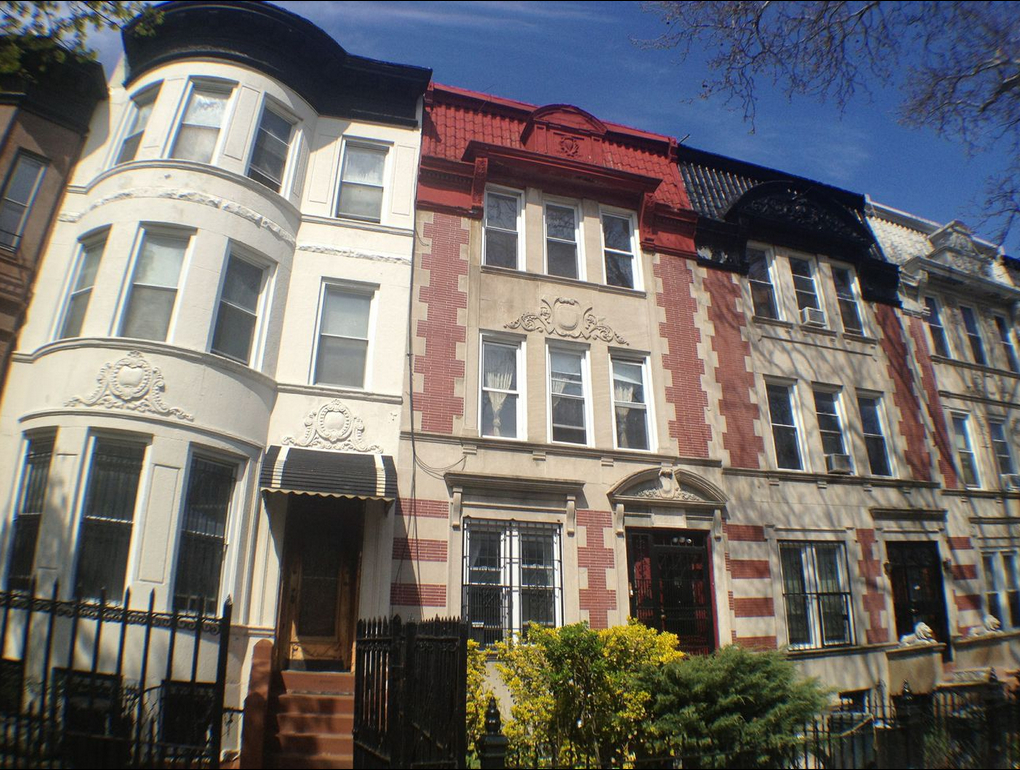Judge rules against affordable-housing construction in landmarked garden
Eye on Real Estate: Crown Heights residents win legal challenge

Petitioners in the Dean Sage Mansion case include (from left) Adrian Straker, Robyn Berland, Ethel Tyus and Lynn Cave. Eagle photo by Lore Croghan
The city’s need for affordable housing and services for the mentally ill should not influence the fate of landmarked buildings, according to a Brooklyn judge.
Those are not among the criteria the Landmarks Preservation Commission is legally mandated to consider when deciding whether to give developers permission to make changes to landmarked properties, Brooklyn Supreme Court Justice Katherine Levine ruled earlier this month.
The case in question concerns the Dean Sage Mansion at 839 St. Marks Ave. in the Crown Heights North Historic District. In 2016, LPC approved a plan from the property’s owner, the Institute for Community Living, to construct a new building that would have occupied more than half of the mansion’s garden.
